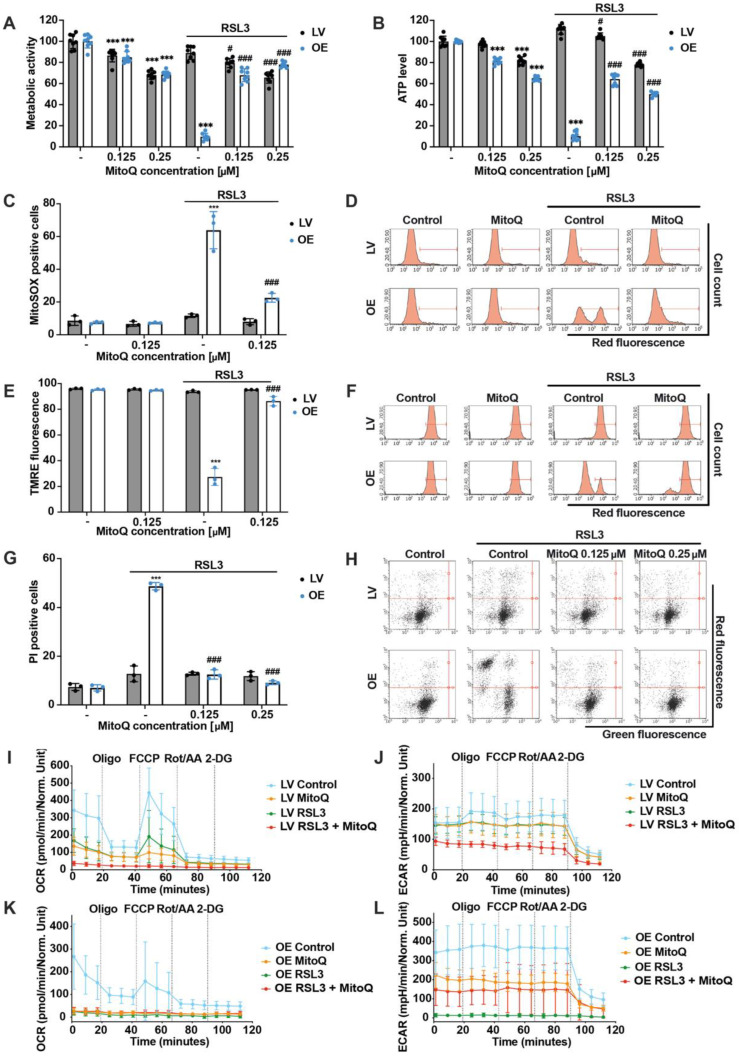Figure 5.
Mitochondrial ROS scavenging by mitoquinone prevents RSL3-mediated ferroptosis in ACSL4/LPCAT2 OE cells. (A) Metabolic activity and (B) ATP levels were determined by MTT or ATP assay after 16 h treatment with 0.1 µM RSL3. Data are shown as percentage of control conditions, n = 8 replicates. (C) Mitochondrial ROS formation, (E) mitochondrial membrane potential, and (G) cell death were quantified by FACS analysis of MitoSOX, TMRE, or PI-stained cells after co-treatment with 0.125 µM or 0.25 µM mitoquinone (MitoQ) and 0.4 µM (MitoSOX) or 0.8 µM RSL3 (TMRE, PI) for 16 h (5000 cells per replicate of n = 3 replicates, percentage of gated cells). (D,F,H) Representative histograms, or dot plots of the respective FACS measurements with gating. (I,K) Mitochondrial respiration and (J,L) glycolysis measurements by the seahorse XF analyzer of LV (I,J) and OE (K,L) cells treated with 0.4 µM RSL3 and co-treated with 0.25 µM MitoQ for 16 h (n = 5–8 replicates per condition). *** p < 0.001 compared to control condition, ### p < 0.001; # p < 0.05 compared to RSL3-treated control condition (ANOVA, Scheffé’s test).

